Salted Bourbon Caramel Sauce
Learning how to make delicious salted bourbon caramel sauce is a great culinary skill to learn. With five simple ingredients, we’ll walk you step by step through the science of caramelized sugar and in just 15 minutes you’ll have a sweet treat to drizzle on top of ice cream and cake or for dunking apple slices.
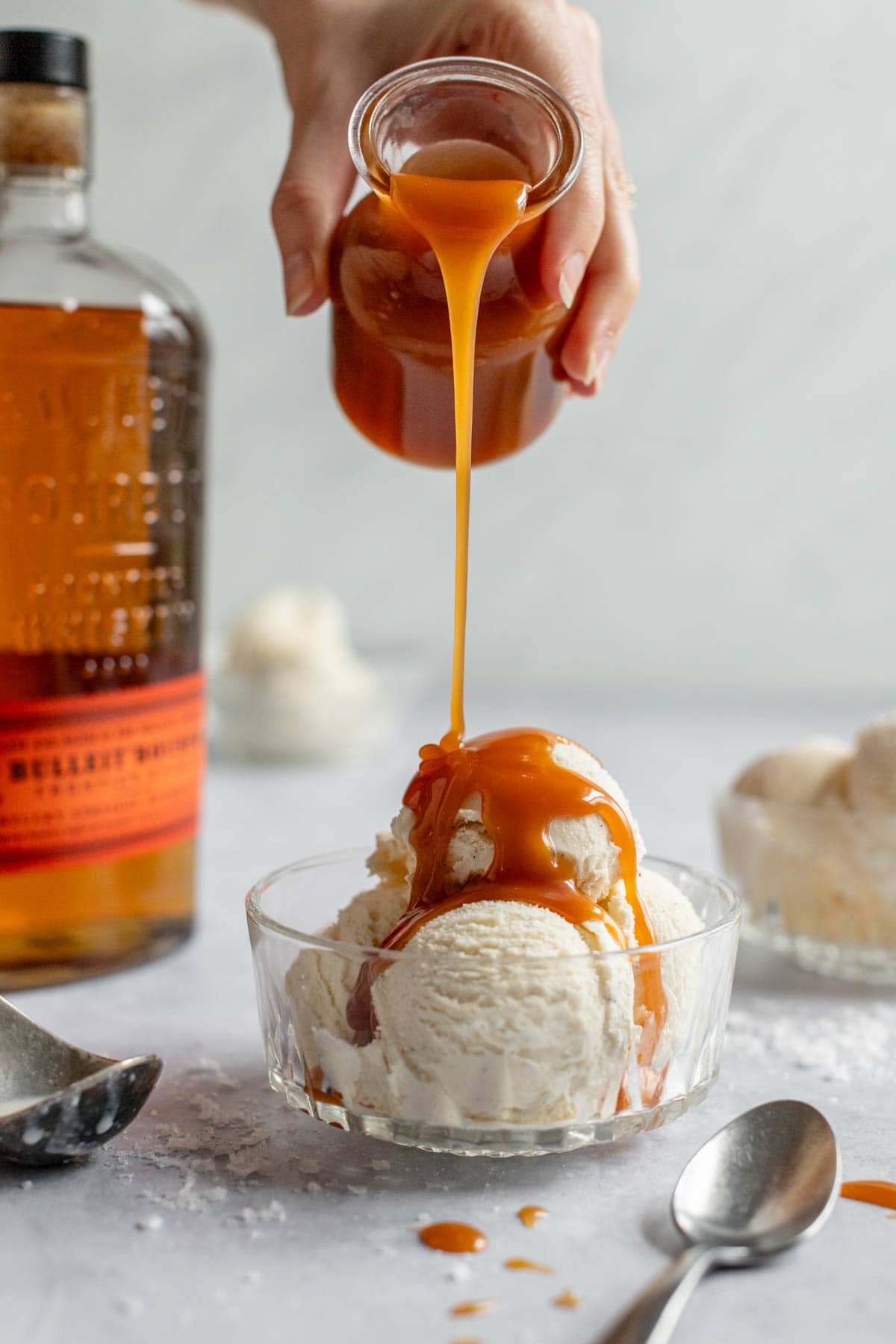
This post was published on October 31, 2014. I have updated the photos and text to share it with you again today.
Table of contents
Why We Love This Bourbon Caramel Sauce Recipe
Bold statement: understanding how to control the evaporation of water (and the subsequent caramelization of sugar) is an important part of cooking most recipes! Today I’ll share what happens in order to caramelize sugar and how to create a flavorful salted caramel sauce.
- Learn how to not let your caramel get grainy or too hard!
- Find different ways to enjoy your caramel sauce
- Make caramel ahead and store it in a mason jar for later use.
- Dive into the science of sugar and water!
Ingredients for This Caramel Sauce
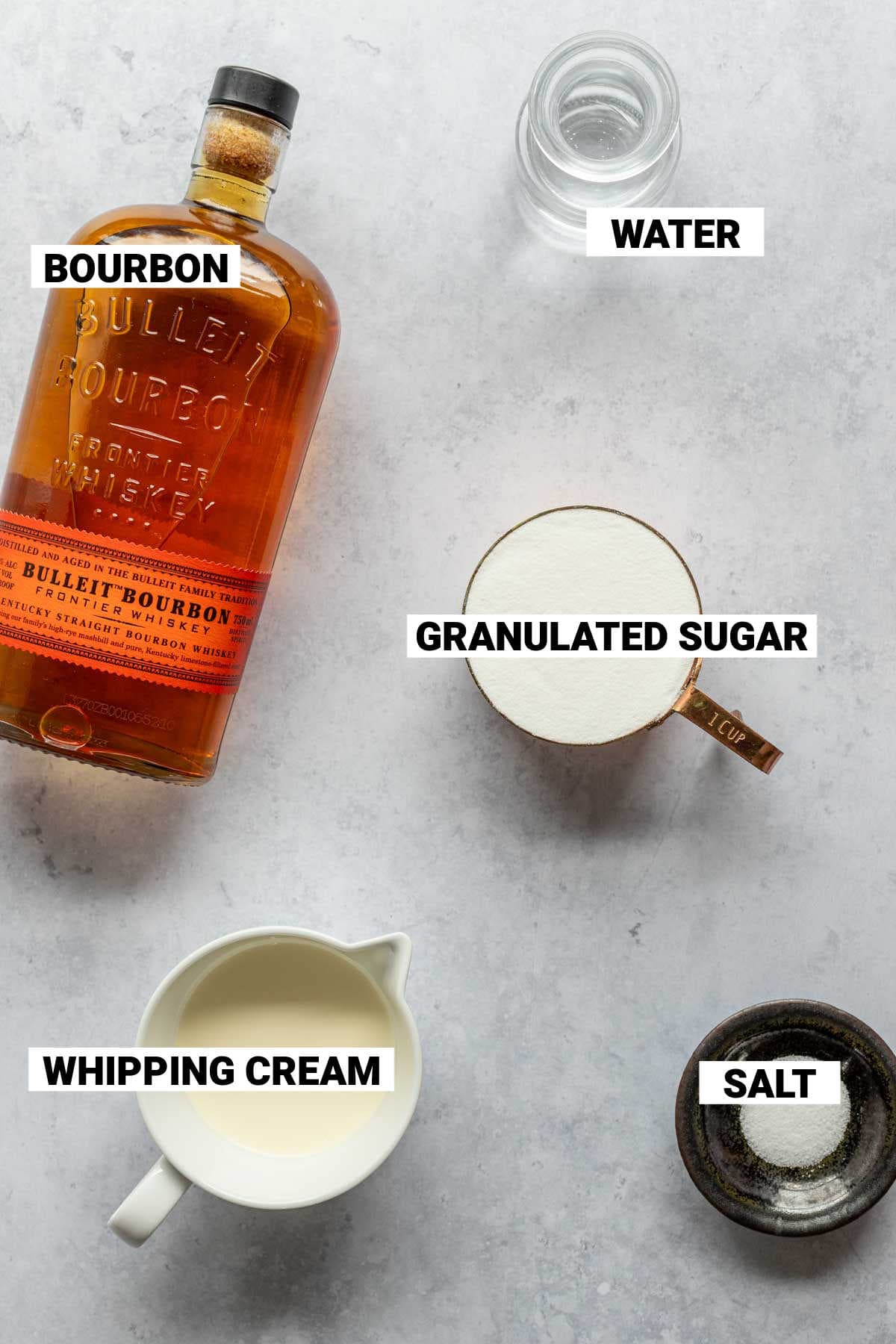
- Bourbon: There are many types of whiskey, and Bourbon is one of them. It hails from Bourbon county Kentucky and some say it is an ever-so-slightly sweeter version of a regular whiskey. It’s aged in oak barrels, which help give it notes of vanilla and caramel, making it the PERFECT addition to caramel recipes (and many other baking recipes in fact). If you do not use alcohol, you can omit the Bourbon.
- Whipping Cream: You can also use heavy cream. They’re essentially the same thing; the difference is in the fat content and the whipping cream has stabilizers in it.
- Sugar: Use granulated sugar.
- Water: While making caramel sauce without water is technically possible, and a common part of making a gastrique sauce, for example, I recommend making this homemade caramel sauce recipe with water. Using water helps make it easier to get rid of any sugar granules before the sugar starts to darken, which is especially helpful for beginners. In other words, there is much more room for error when you make it with water.
- Salt: Salt makes the sweet pop!
Science of Caramel Sauce
Before we begin it’s important to go over a little science primer for caramel sauce which has to do with the boiling point of water (212 degrees F) and the much higher temperature at which sugars caramelize (between 320 and 356 degrees F).
- When we make caramel sauce, the sugar mixture won’t go above 212 until the water is gone.
- Keeping this in mind is helpful if you are trying to make super smooth caramel sauce (one that isn’t gritty or sandy.) The trick is to melt the sugar first (and get rid of any grains that can seed or crystalize your caramel), then allow the water to evaporate. Next you’ll be able to let it cook without stirring, until the sugars caramelize or darken, this happens around 340 degrees F.
How To Make Salted Bourbon Caramel Sauce
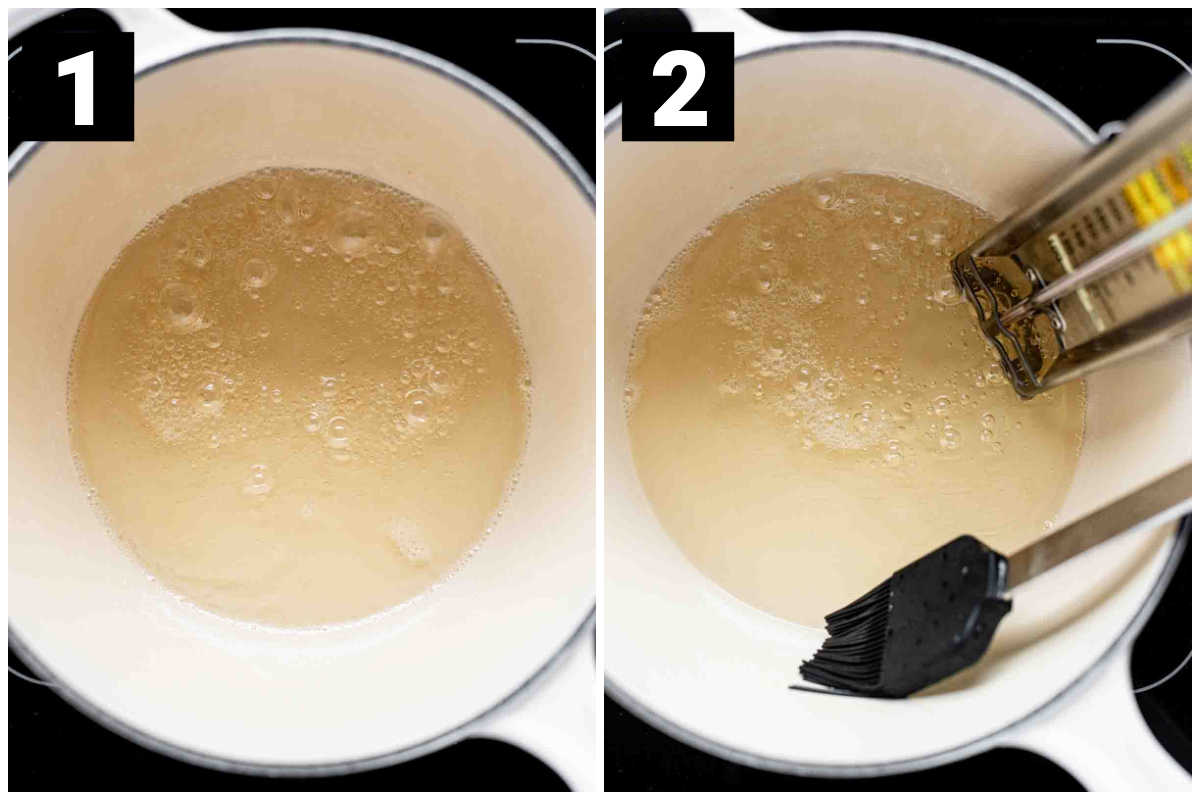
Step 1: Melt sugar
Stir to combine the sugar and water in a medium heavy-bottomed saucepan, and set over medium-high heat. Do not allow the flames to lick the sides of the saucepan. Cook, stirring until the sugar dissolves, and the mixture becomes clear and starts to bubble along the edges.
The key here is that you are melting the sugar grains. You are safe to stir the sugar and water as much as you need to at this point, but if possible, try not to splash the sugar up onto the sides of the pan too much, as you’ll just have to wash them off in the next step.
Step 2: Brush down sugar crystals
Set a bowl of water next to your burner and wet a pastry brush in it. Then run the wet brush along the edge of the bubbling sugar mixture, brushing down any crystals of sugar. This is extremely important if you want smooth caramel sauce! Think of it as “washing” down the sides of the pot.
If you want to use a candy thermometer, now you can set a sugar thermometer on the side of the saucepan. It is important to set it so that the indicator is submerged into the simmering sugar. If your syrup is not deep enough to submerge the thermometer’s sensor, you can burn your caramel.
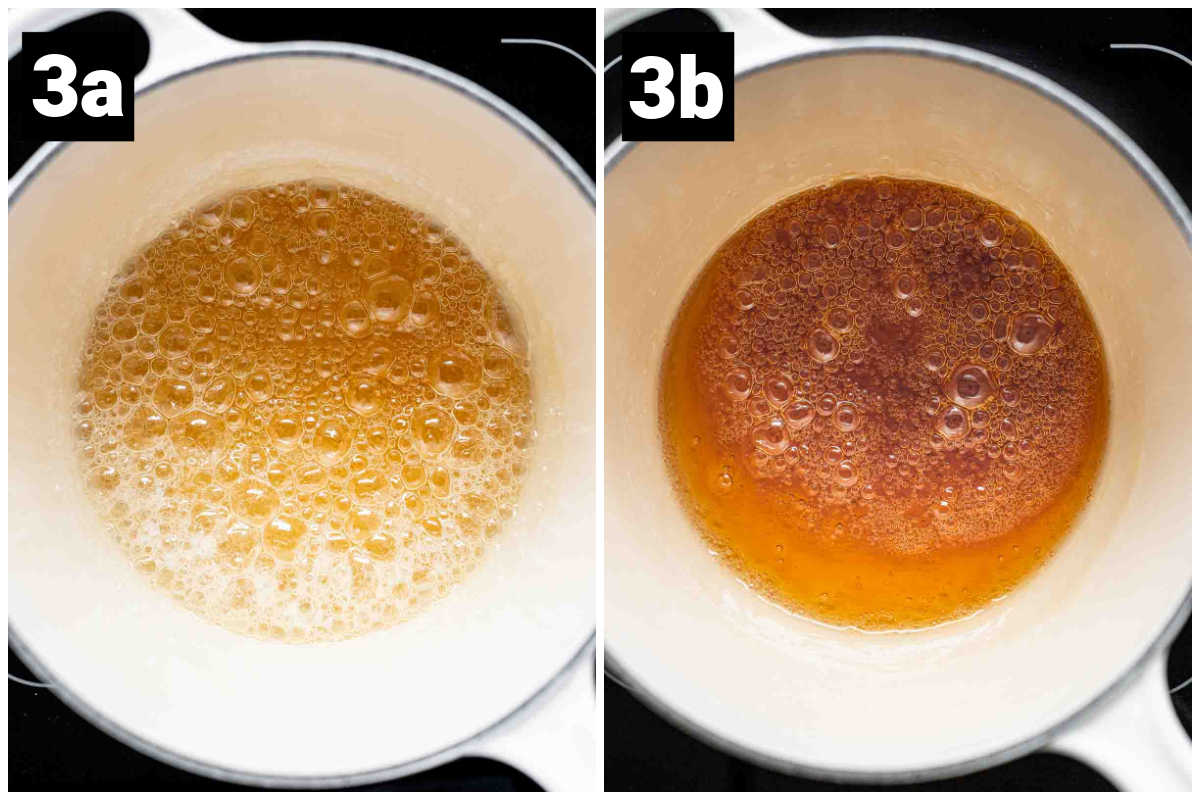
Step 3: Caramelize The Sugar Syrup
Let the sugar simmer over medium to medium-high, undisturbed. DO NOT STIR!
The timing for step three will vary depending on the size of your saucepan and how much water you used to brush down the sides. Be patient! It can seem stuck at 212 for a long time, and will go slow until all the water has evaporated. Then it will start to climb quickly once the water is cooked off.
That’s when you’ll start to see bigger and bigger bubbles and the mixture will darken. Gently swirl the pan and continue cooking until the mixture is 240 degrees F and amber colored. As a guide, note that this will take about 7 to 8 minutes, but your timing will vary depending on your conditions, equipment etc.
How to make caramel without a thermometer
No Thermometer? No Problem! Visual cues go a long way for this sweet sauce.
- A light blonde color will produce a mellow caramel flavor for the sweet sauce, while a deep amber color (longer/higher heat) will have a little more of a bitter taste.
- The mixture will keep cooking and temp rise quickly, so once it starts to darken to golden brown, be ready to add the cream to prevent it from getting too dark.
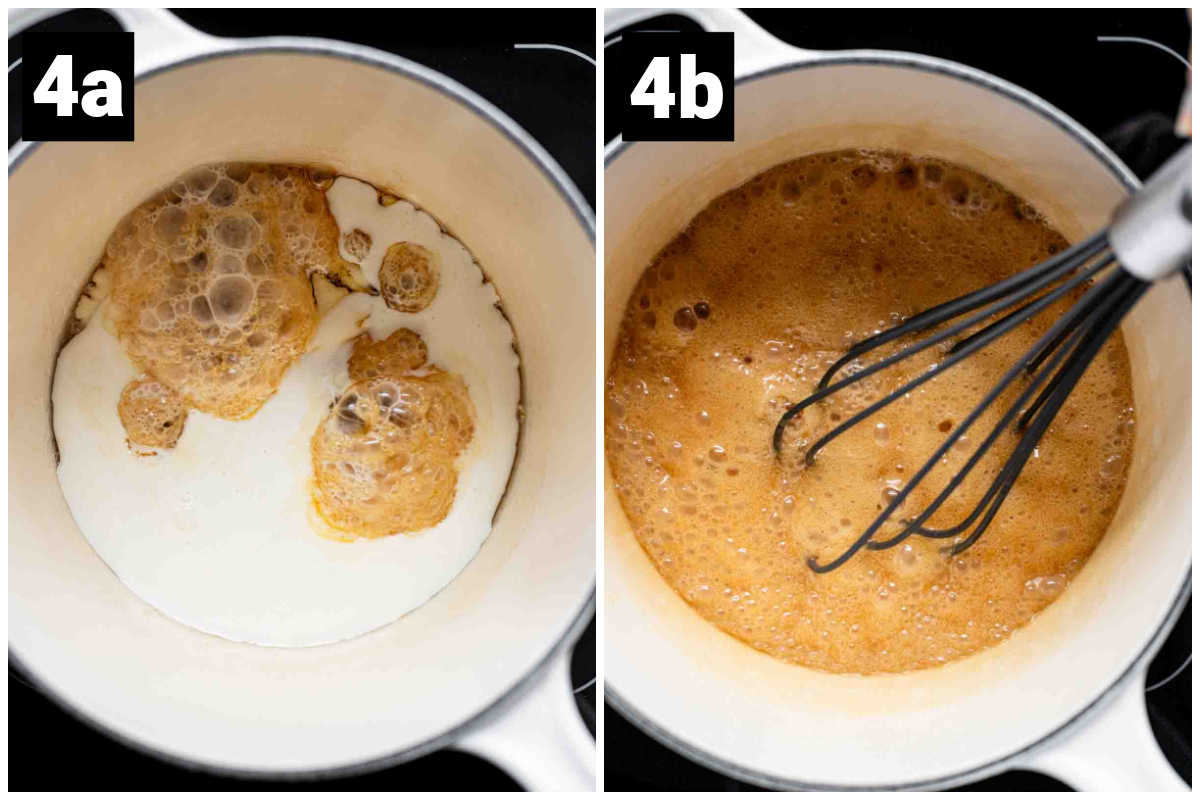
Step 4: Whisk in cream
Quickly remove the saucepan from the heat and carefully pour in the whipping cream and Bourbon. The mixture will bubble vigorously. Now it is okay to stir! Whisk in the salt. If the mixture is not smooth, return to medium heat, whisking until smooth, about 1 minute.
Transfer the caramel to a heat-proof jar and allow to cool. Use or store in the fridge for up to 2 weeks.
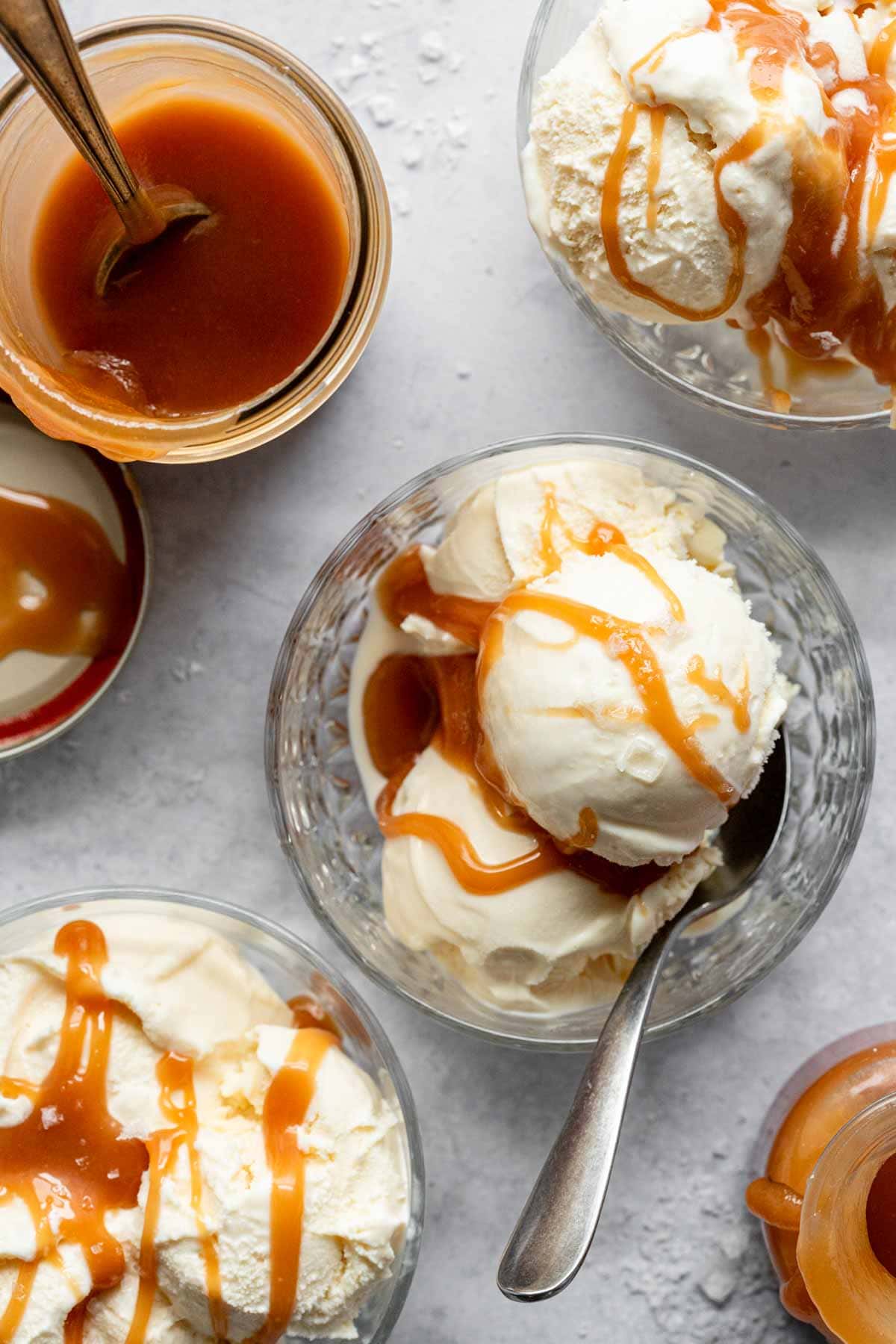
FAQs For Homemade Salted Caramel Sauce
Why Did My Caramel Sauce Separate?
This is a normal part of the process when you add the cream and whiskey to the caramel. The addition of cold liquid will cause the candied sugar to seize. The whole thing will look ruined! But don’t worry, place the caramel back on medium heat and whisk gently until it’s smooth and combined.
How Do You Keep Caramel Sauce From Hardening?
Caramel will harden if it is cooked too long or doesn’t have enough liquid added back to it, at the end. Once you heat the sugar syrup past the “hard ball” stage it will harden. But if you add cream back to the mixture and reheat it to melt the sugar it should stay liquid. Do not re-heat it for too long though- as this will cook away the liquid.
If your caramel hardens, try warming it up. If it doesn’t soften, add a little cream and continue heating over low heat, stirring often.
Why Is My Caramel Sauce Grainy?
Caramel gets grainy or gritty when it is seeded by sugar crystals. This can happen for two reasons:
- The sides of the pot got too hot: If your burner is too wide and the sides of your pan are very hot this can be a problem. Prevent this from happening by controlling the heat on your burner (or use a smaller burner) so the heat or flames are not licking the sides of the pan.
- Stirring: When you stir, you splash the syrup up onto the sides of the pot and this can cause crystals to form along the edges of the sugar syrup. If sugar crystals come in contact with the syrup it can seed the whole batch and it will crystalize. Once you have melted the sugar down, do not move the pot or stir. To get rid of any crystals that are along the edge, wipe or wash them away with a wet pastry brush.
Does Caramel Sauce Go Bad?
Yes, caramel sauce will go bad after 2-3 weeks. The dairy in the sauce is what shortens the shelf life. Keep it refrigerated.
What kind of pot should you use?
I recommend using a medium heavy-bottomed saucepan for this homemade bourbon caramel sauce, but if you don’t have one, just make sure your pot is large enough for there to be room for the sauce to bubble up, but narrow enough so that you can get an accurate reading on your candy thermometer.
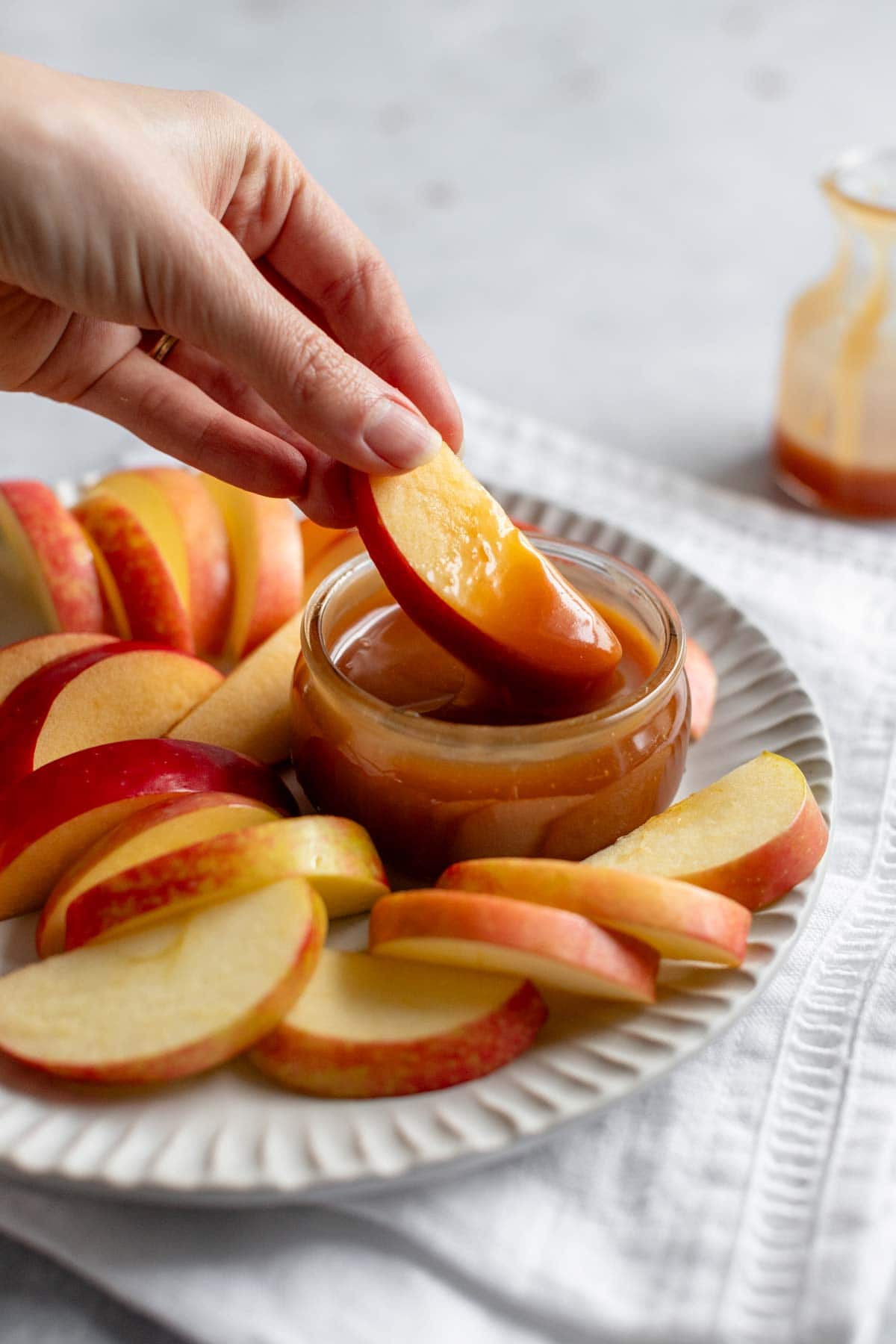
Serving Suggestions
There are so many ways to enjoy your homemade salted caramel sauce. Here are a few ideas to get you started!
- Enjoy caramel drizzled on vanilla ice cream, or the ice cream of your choice. Add on more ice cream toppings and whipped cream to make it a sundae!
- Drizzle it over flourless chocolate cake or with brownies a la mode. Top either dessert with flaky sea salt for extra salted caramel flavor.
- Jar the decadent bourbon caramel sauce and wrap it with a ribbon for a gift from your kitchen over the holiday season.
- Enjoy the perfect sauce dipped with apple slices – granny smith is our favorite caramel pairing!
- Drizzle a little bit on banana bread.
- Make some cookies and sandwich a dollop of caramel between the two of them.
- Maple bourbon pumpkin pie is just asking for a bit of bourbon caramel on top!
- This deep dish double crust maple apple pie is great with a scoop of ice cream and caramel on top. The hint of bourbon whiskey elevates the dish!
- Stir it into iced tea for some extra sweetness. Adults can add a splash of a good bourbon!
- Eat a spoonful – we sure do.
Make Ahead, Storage, Freezing, Reheating
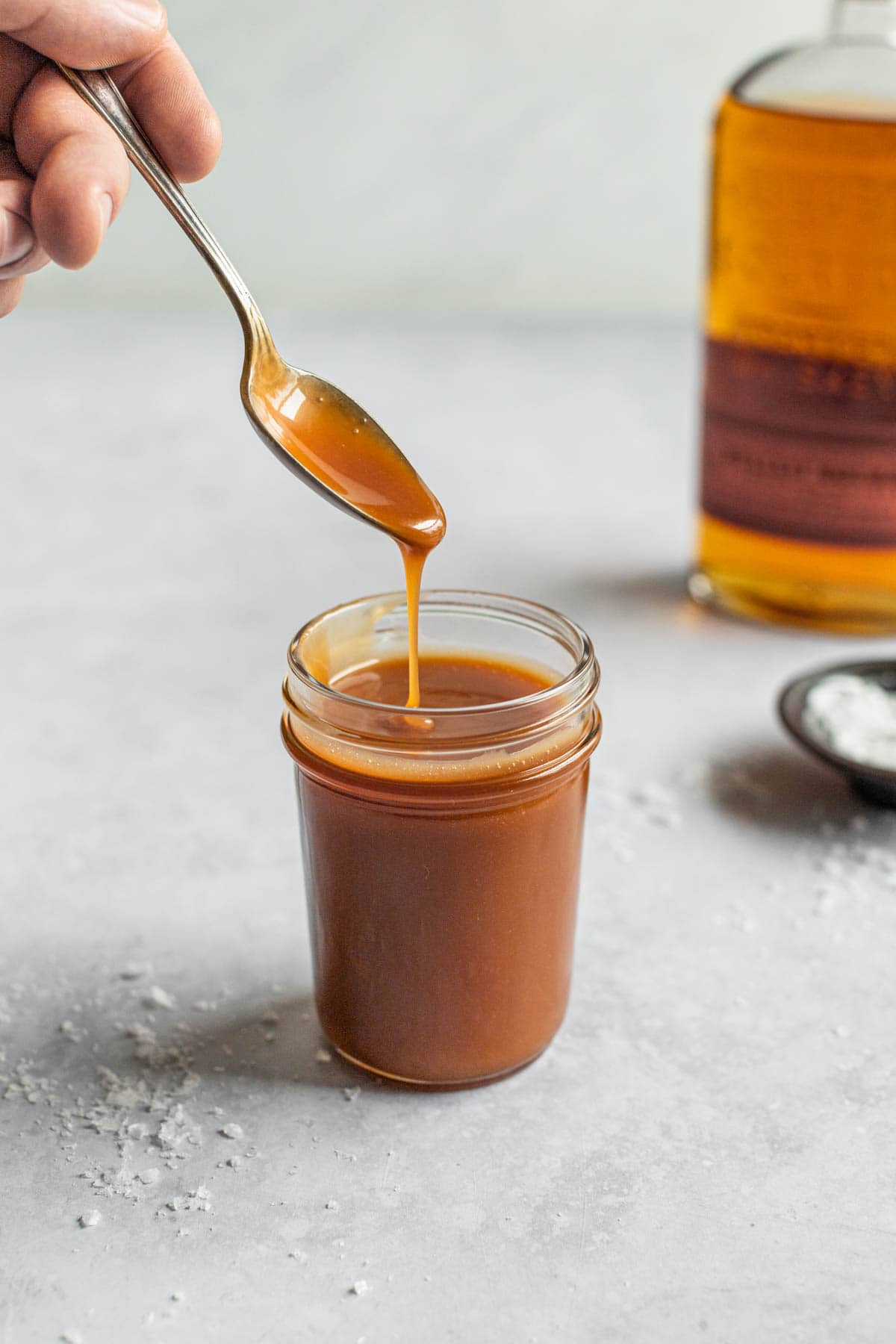
- Make Ahead: This homemade salted caramel sauce is great to make ahead and use for the next couple of weeks.
- Storage: Allow the caramel sauce to cool to room temperature and then store it in an airtight container – like a mason jar – in the fridge for up to two weeks.
- Freezing: Freeze in an airtight container for about 3 months.
- Reheating: To reheat from frozen, allow it to defrost in the refrigerator overnight, and then microwave it for about a minute, stirring every 30 seconds until it’s smooth. You can also reheat it on the stove over medium heat.
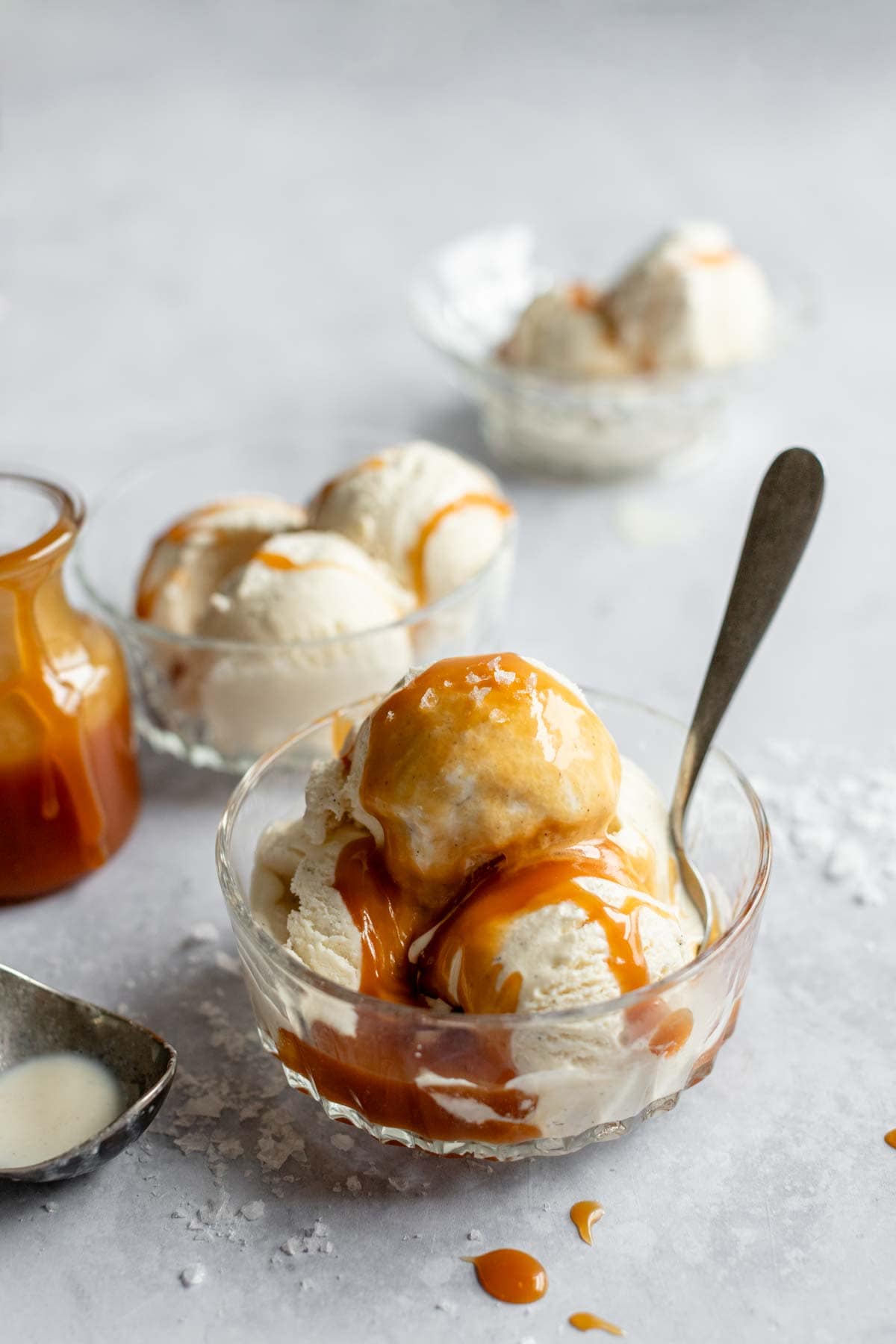
Thanks so much for reading! If you are new here, you may want to sign up for my email newsletter to get a free weekly menu plan and the latest recipes right to your inbox. If you make this recipe, please come back and leave a star rating and review. I would love to hear what you thought!
Happy Cooking! ~Katie
Print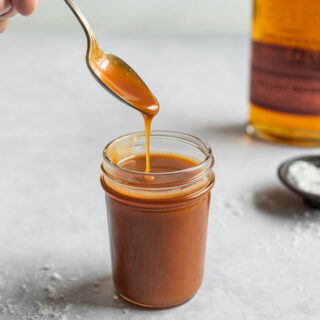
Salted Bourbon Caramel Sauce
- Total Time: 15 minutes
- Yield: 1 cup 1x
Description
Learning how to make delicious salted bourbon caramel sauce is a great culinary skill to learn. With five simple ingredients, we’ll walk you step by step through the science of caramelized sugar and in just 15 minutes you’ll have a sweet treat to drizzle on top of ice cream and cake or for dunking apple slices.
Ingredients
- 1 cup sugar
- 1/4 cup water
- 1/2 cup whipping cream
- 2 teaspoons Bourbon
- 1/2 teaspoon salt
Instructions
- Stir sugar and water in a medium heavy-bottomed saucepan, and set over medium high heat. Do not allow flames to lick the sides of the saucepan. Cook, stirring until the sugar is dissolved, and the mixture becomes clear, and starts to bubble along the edges.
- Wet a pastry brush with cold water, and run along the edge of the bubbling sugar mixture, brushing down any crystals of sugar. Continue washing away any granules that form along the edges of the pot. Once they are gone, do not stir again. If desired, set a sugar thermometer on the side of the saucepan so that the indicator is submerged into the simmering sugar.
- Let simmer over medium to medium-high, without stirring and completely undisturbed until the mixture starts to darken along the edges, 7 to 8 minutes. Gently swirl the pan and continue cooking until the mixture is amber colored. If using a thermometer, it will reach 240 degrees F.
- Quickly remove from heat and pour in whipping cream and Bourbon. The mixture will bubble vigorously. Whisk in salt. If mixture is not smooth. Set over medium heat, whisking until smooth, about 1 minute.
Notes
Cooking Tip:
In step 2 I like to keep a little bowl of water and a pastry brush next to my saucepan, so I can brush any sugar crystals down with it. This will prevent the sauce from becoming “seeded” by stray crystals and seizing. Once they are washed away in step 2, do not continue to brush the pot down as this will add more water to your mixture and prevent it from caramelizing.
- Prep Time: 15 minutes
- Cook Time: 15 minutes
- Category: Condiment
- Method: Stove Top
- Cuisine: American
Nutrition
- Serving Size: 2 tablespoons
- Calories: 144
- Sugar: 24 g
- Sodium: 148 mg
- Fat: 6 g
- Saturated Fat: 3 g
- Carbohydrates: 24 g
- Fiber: 0 g
- Protein: 0 g

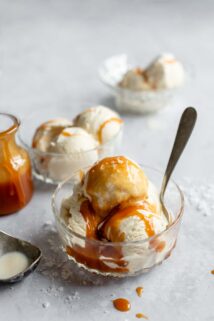
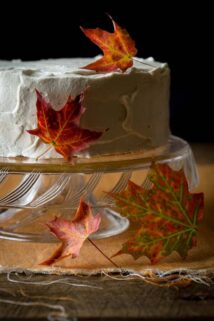
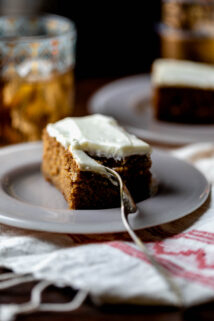
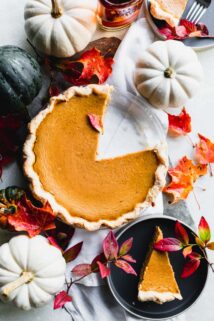
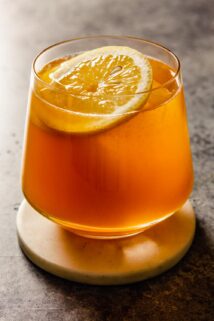
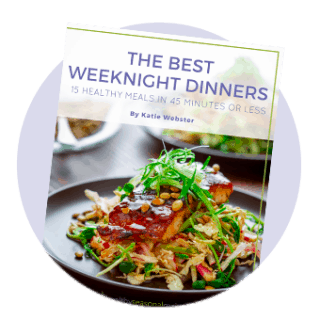

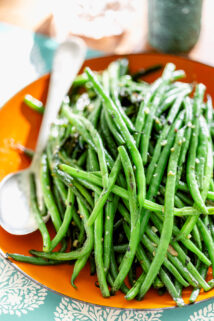
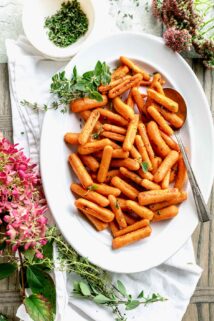
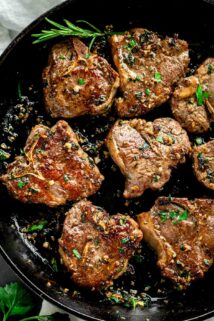
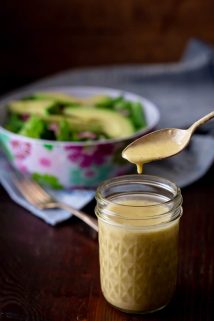
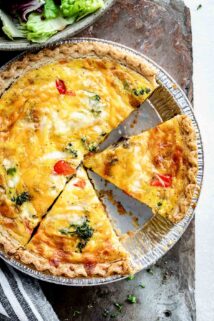
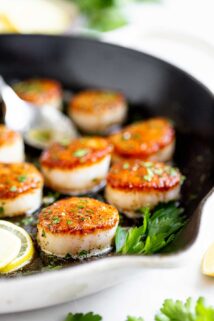
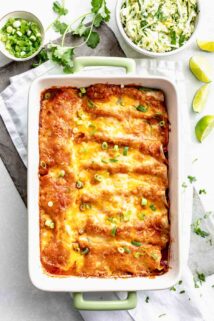
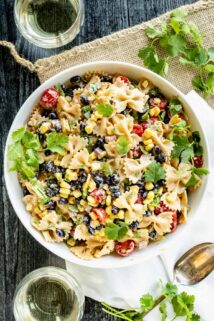

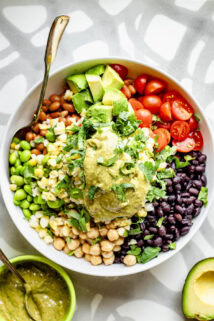
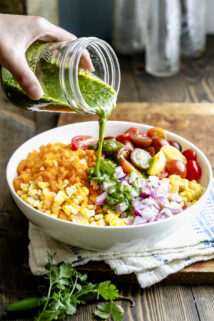
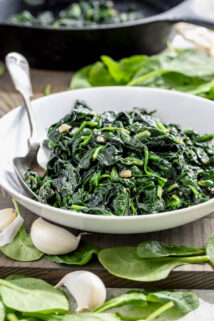
This sauce was very easy to create, yet it tasted incredibly rich and decadent! When we served it with ice cream for dessert, my whole family loved it.
Thanks for all the tips for cooking sugar as I had no idea about the sugar crystals causing seizing of the mixture. I’ll be eating this sauce with a spoon!
Very easy to make, and it was really good! thanks for the recipe!
This is insanely good! Just a subtle hint of bourbon but it transforms the sauce completely! One of the best recipes I’ve ever tried! Thanks 🙂
This sauce was so easy to make and was so luscious and decadent! We paired it with ice cream for dessert and my whole family loved it!
This recipe worked for me. For my taste, I think 340 degrees is a bit too dark. I took mine off the stove at about 325 degrees and there’s a significant amount of bitterness, but not enough to call it burnt….just very dark. I also added five tablespoons of butter and I used a tablespoon and a half of buttershots instead of bourbon since we didn’t have any of that. And I splashed a little vanilla into it, too. 😀 But it’s very smooth. I couldn’t wait and as soon as the butter was melted in and it was essentially ready, I put it piping hot over some Blue Bell Natural Vanilla Bean ice cream and sprinkled some nuts on it. It was almost a perfect combination. The next time, I’ll take the caramel off the fire a little sooner so it’ll be just right. Thanks for such an easy recipe! 😀
Woa – I came for the caramel sauce and am leaving with so much info! I had no idea all the science behind caramelization!
Love your little war explanation… such a great tutorial! And this recipe… holy crap it needs to happen in my kitchen immediately. I would happily pour that on anything and everything… and don’t judge me if I drink a little straight up 😉
It is best straight from a spoon. That’s what I’ve decided. Why bother putting it on anything. Ha ha.
Hello Katie ! I saw your caramel salted and I couldn’t resist to take a look ! It looks so good !
Hi Eva, Glad you found me and thanks for leaving a note. Happy cooking!
Happy Halloween Beautiful! Love this post. WANT some now! Caramel is my downfall to life in general. Wishing you and your family a safe evening!
So glad you like it Amber. Hope you and your little ones had a great Halloween.
Boo! Uh…I mean Happy Halloween! 🙂 I guess you’re all busy getting the little ones ready for a night of candy gathering. And about this recipe…my knees would buckle too. I make a caramel sauce but I never thought of adding bourbon. Brilliant idea! Hope you guys have a great night!
Thank you, and I think I probably was when this comment came in Bill. My girls had such a fun night. They are happily playing on the carpet trading candies as we speak. I am thinking about the switch witch at this point.
Never apologize for a science lesson! I loved this post and all your explanations. The Carmel sauce- wow! I can just picture it drizzled on an apple galette. Pinning this!
Really? Thank you Nicola. Glad you like the sauce too, and thank you so much for pinning.
First of, loveee the science lesson. I usually have a hard time getting my caramel sauce to caramelize. I know why now. And same with the slow cooker…perfect as I am doing a slow cooker meal on Sunday. Anddd this bourbon sauce..can I just eat it with a spoon please?!
Glad you liked the food science stuff. I realize it isn’t for everybody. And I am with you on the spoon part. Ha ha.